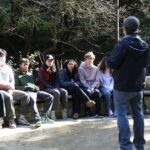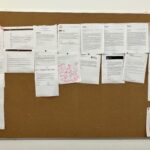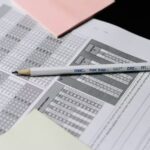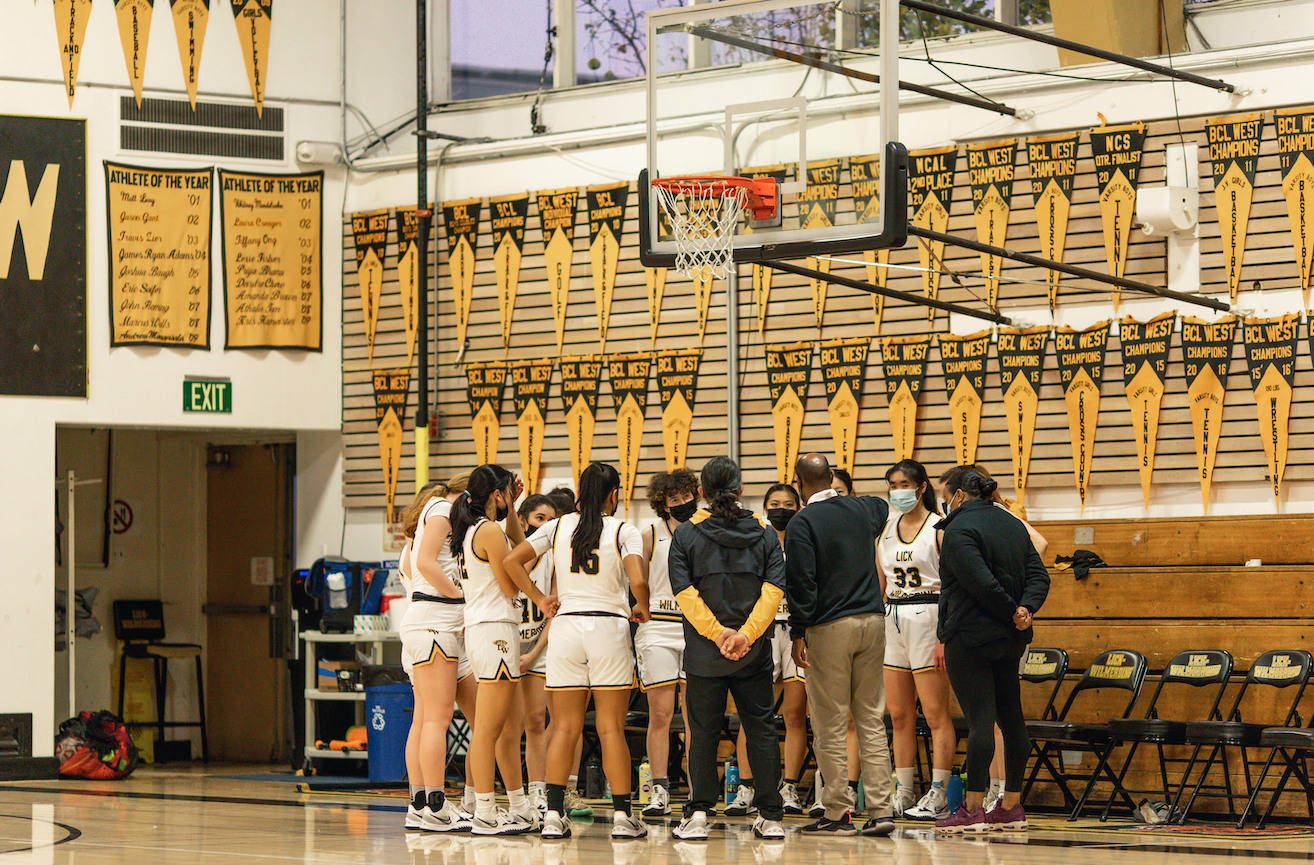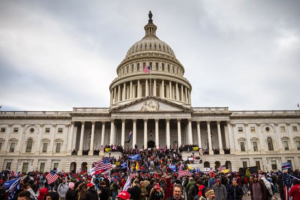As the Omicron variant tore through the Bay Area, the Lick-Wilmerding community went the extra mile with safety measures to adjust to this new reality.
The worst of this particular variant may be over, but it is important to ask what we have learned as a school so far about sharing and mitigating risk. Omicron was not the first variant, and will likely not be the last that we confront. As we move forward, whose safety do we prioritize and how do we decide what risks are worth taking?
As Omicron closed in, much of the school reverted to protocols from last spring. Classroom desks were distanced three feet apart. For a time, students at each table group could not face each other during discussions, despite this being a core aspect of LWHS’ collaborative learning process. Universal masking continued and the outdoor mask mandate was reinstated; our friends’ faces were once again covered, our voices muffled and our expressions hidden.
Yet the one aspect of life at LWHS that largely escaped alteration was the athletic program.
According to LWHS’ Health Coordinator Mariah Kaitz, as of February 16 there had been ten confirmed cases of students with COVID-19 on the winter athletic teams. Those ten cases also created 62 close contacts at the school, resulting in daily testing for those LWHS students and, depending on their booster status, possibly missing school.
At LWHS, we have been privileged to have rigorous policies that ensure student well-being: twice-weekly testing, social distancing and masking in and outdoors. Other schools do not have the same resources to enforce these policies, so they are playing high contact athletics — with masking optional or not enforced — untested.
In the meantime, while we masked up at lunch, our athletic teams were allowed to proceed with less disruption.
Why has the administration’s policy deliberately favored the athletic experience of a small portion of students over the academics, social lives and safety of students, teachers and their extended families?
Kaitz explained the school’s thinking. “We felt as if as long as we can contain each case and jump on each individual case that day and address it that day, then we will be okay,” she said.
Kaitz acknowledged that it had not been smooth sailing the whole time, especially at the beginning of the semester. As cases increased in athletics,“it started feeling like a wildfire, trying to get doused with a squirt gun. But our plan started to actually work and then the cases started to drop and it became a lot easier to manage.”
Looser rules around masking during and around sporting events, and the fact that many of the schools that LWHS teams play do not have any testing policy in place, have no doubt contributed to the spread among athletes. This is especially true of the large Bay Area public schools that our teams play in tournaments outside our league. The San Francisco Unified School District has not mandated testing largely due to the lack of resources afforded to them that we, as a private school, have been lucky to have.
Yet while we were required to wear our masks outdoors at school to protect ourselves and each other, some teams like the Varsity Boys’ Soccer team and their opponents opted to not wear masks while playing. A quick look at the school’s online “Weekly Media Gallery” in the e-Tiger is all one needs to understand that even the indoor teams wearing masks weren’t exactly wearing them over both their nose and mouth while they played.
Considering how uniform many of LWHS’ policies are — why were sports teams given the autonomy to decide what safety measures they would use? This autonomy led to a discrepancy from team to team about how to handle COVID-19. Kylie Gursky ’22 explained why the Girls’ Varsity Soccer team decided to wear masks during their games, making them the only school in their league to do so. As COVID-19 began to spread to the Varsity Girls’ Basketball team, members of the team were required to quarantine. The Girls’ Varsity Soccer players decided they didn’t want any part of that. “From there we all just decided to wear masks just to stay safe. And if one of us got COVID then we wouldn’t all have to quarantine and we can keep playing.”
But at what point do sports become detrimental to the well being of the student body — and of the teachers and staff whose jobs require them to live with the consequences of our choices?
Of course we all want sports to continue, just like we want our classrooms back to normal and our lunches unmasked. We want a Winter formal and a prom and we want to be able to invite our families on campus for performances.
While healthy teenagers might feel comfortable wearing their masks down around their chins on the basketball court, teachers and staff have to worry about infecting their children, some not old enough to be vaccinated, their spouses, or their elderly parents. What might be an inconvenient few days at home for one student could be a dramatic loss of wages for parents or spouses who cannot go to work because they or their young children are infected.
It is a privilege to believe we will be safe, even if we end up on the wrong side of our twice-weekly rapid tests. However, for those around us, the consequences of our choices — and of the administration’s inconsistent policies — could be serious.
The inconsistent policies have continued to make all of our efforts feel less meaningful. If athletics were continuing to be played with no greater restrictions or precautions, why was the rest of the student body required to sacrifice our social interactions, classroom collaborations and extracurricular events?
Moving forward, sports teams should be held to the same standards as the rest of us. If we perform with masks on stage in One-Acts, then it is not too much to ask our athletes on the basketball courts to do the same.
The Winter Sports Season was an important opportunity for LWHS to learn how to balance safety, athletics and making sure the experiences of all students were valued. But it was more complicated than that, and it’s not clear that we hit that balance. In the future, as we deal with potential new variants and continue to adjust and readjust to changing norms and situations, LWHS teams should approach athletics with a more careful attitude and less impunity in order to keep us all on the same playing field.
